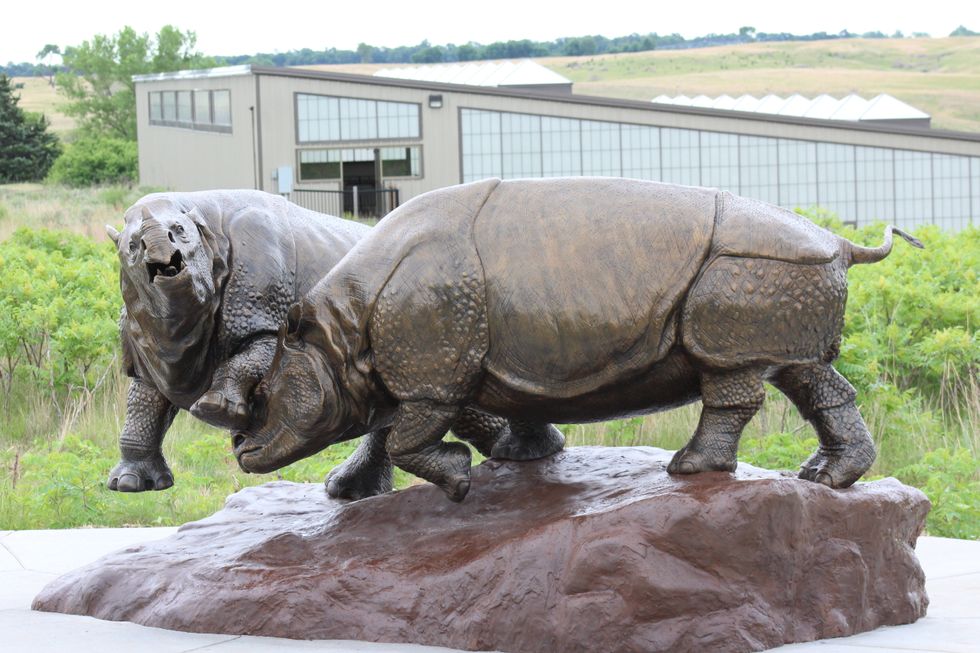It was the first time for many to attend Ashfall Fossil Beds near Royal when a private event was hosted as a dedication to the bronze sculptures recently donated. Last Saturday brought many to witness the sculpture dedications including Dr. Kirk Johnson, director of the Smithsonian National Museum of Natural History.
Dr. Johnson is a trained paleontologist who has long been interested in Nebraska’s paleontology. He recalled first hearing of Ashfall when a magazine article in the National Geographic caught his attention. Ever since then, Dr. Johnson has dreamed of coming to Ashfall Fossil Beds and this year finally allowed him to make the trip. It’s taken me over 30 years to get here, but I’ve finally hit a personal marker he joked.
And Ashfall didn’t disappoint him. After waiting years to see it, Dr. Johnson was amazed by the landscape, beauty, and preservation the state park holds. He continued to exclaim how rare of a sight Ashfall Fossil Beds truely is by describing it as atypical.
“It’s fantastic. I think it’s one of the very best fossil sites in North America and I’ve visited lots of fossil sites and this one is just amazing,” said Dr. Johnson.
Mike Voorhies discovered the site 46 years ago and has continued excavating it ever since. But, what makes this discovery so special is the three dimensional layers the volcanic ash settled the animals in.
Interim Vice Chancellor for Research and Economic Development at UNL, Steve Goddard, said, “The fossil beds here are the only fossil finds that we know of in the world in which large prehistoric animals are preserved in 3D dimension in volcanic ash.”
That is why the recently donated sculptures of two fighting rhinos and a giant tortoise from the Hubbard family built by Gary Staub was so important to Ashfall. Dr. Johnson continued to share how these sculptures are a significant resource to paint a real picture in people’s mind how Nebraska’s past looked.
“It really brings home what was here and how strange Nebraska used to look,” said Dr. Johnson. “You see a tortoise and think Galapagos not northeastern Nebraska. I think those things really stick in your brain. It will change the way they think about Nebraska, change the way they think about time.”
UNL Chancellor Ronnie Green was also in attendance at the special event who took a futuristic look at the statues.
“You have no idea what a world resource you sit on and these sculptures are now here as a lasting legacy,” said Chancellor Green.
While the sculptures do bring a lasting legacy to the state park, Dr. Johnson also brought thought to how Ashfall was a lasting legacy in itself. Nebraska has a very important fossil record here because they are better than most places. At Ashfall especially because there is a real narrative here that anybody can see he said.
“A story told by fossils,” added Dr. Johnson. “It’s not just important to Nebraska, it’s a nationally important sight.”
His passion for fossils and Ashfall only continued when he finished telling me that Ashfall was worth coming to.
“I wish it was in a place that a lot more people could see it. But it’s worthy to be seen by a lot more people,” said Dr. Johnson. “A hidden treasure in North America.”
LifestyleJun 21, 2017
Ashfall Fossil Beds, A Hidden Treasure
This local fossil bed in Nebraska is considered one of the best in North America.
31


















